Charlie and I celebrated the phaseout of lockdown recently with a trip to Rouen, a lovely city with a knockout cathedral. The trip was also a reminder that France isn’t just Paris.
In the past we’ve traveled widely in our adopted country, but the various COVID restrictions kept us at home a lot in the last year. One result: We fell into the habit of equating Paris with France, a common lapse given that France is one of the most centralized countries in the world.
Paris is “the glory and misfortune of France, the circle of selfishness, the magnet that draws the iron filings, the grafted heart that beats at the center of the organism,” Sanche de Gramont writes, floridly and accurately, in “The French: Portrait of a People.”
One-sixth of France’s population lives in the Paris metro area; London holds just over one-eighth of Britons. All but one of the largest 30 French companies are located in Paris or the Paris region, according to Fortune. In Germany, the biggest 30 companies are spread among 19 cities. Paris is France’s center of culture, politics, business and more.
The Rouennais, as they are called, seemed uninterested in this, and one can see why.
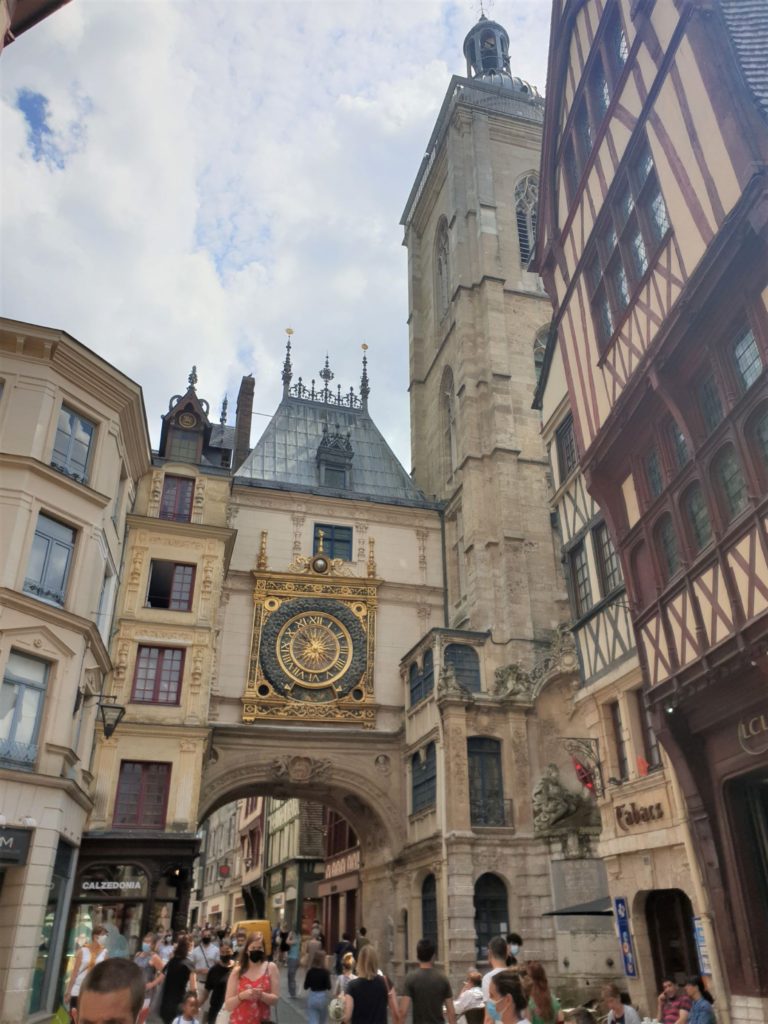
Their city, the capital of upper Normandy, was the second-largest city in France until the 18th century, boosted by trade along the Seine that allowed its burghers to build luxurious mansions. (Today, with a population of 110,000, it’s 37th.)
Joan of Arc may be the Maid of Orleans, but in 1431 she was burned at the stake in the central square of Rouen, about 100 yards from where we tucked into our seafood lunch at an outdoor restaurant. Even though 45% of Rouen was destroyed during World War II – by Allied bombers targeting German installations – the affected historic buildings were rebuilt or repaired.
France had reopened to outdoor dining in May but the cold, gray weather had kept many at home. We arrived in Rouen along with the sun and warmth.
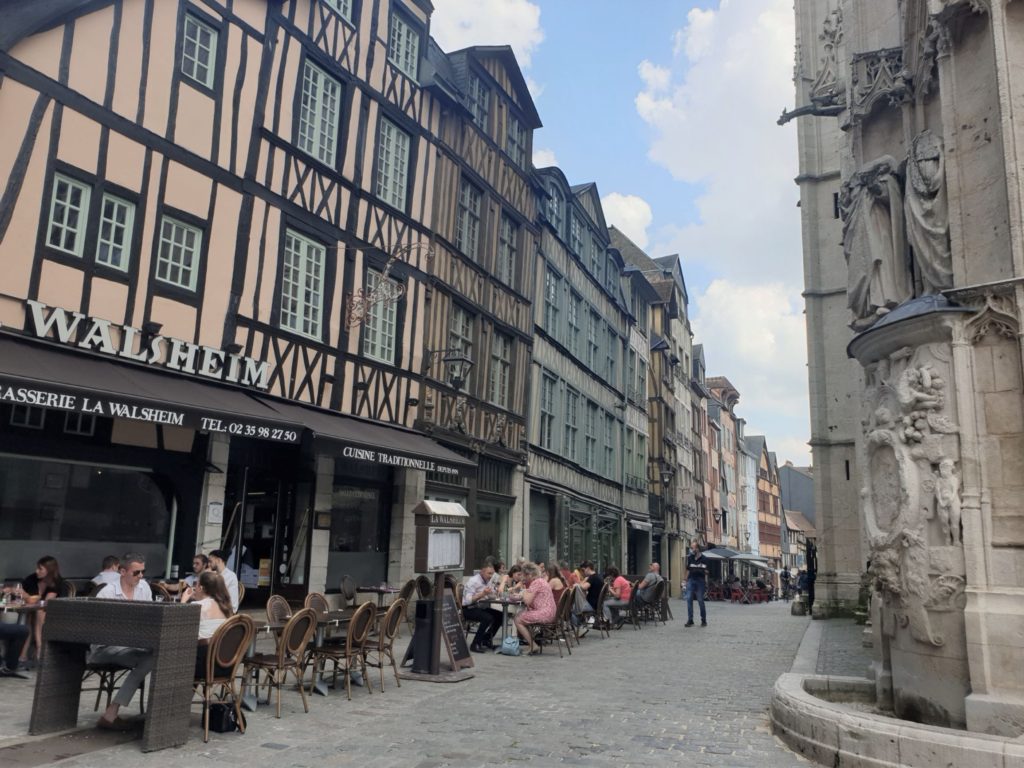
The Cathedral – bigger than Notre Dame and prettier even than Chartres – is worth the trip on its own.
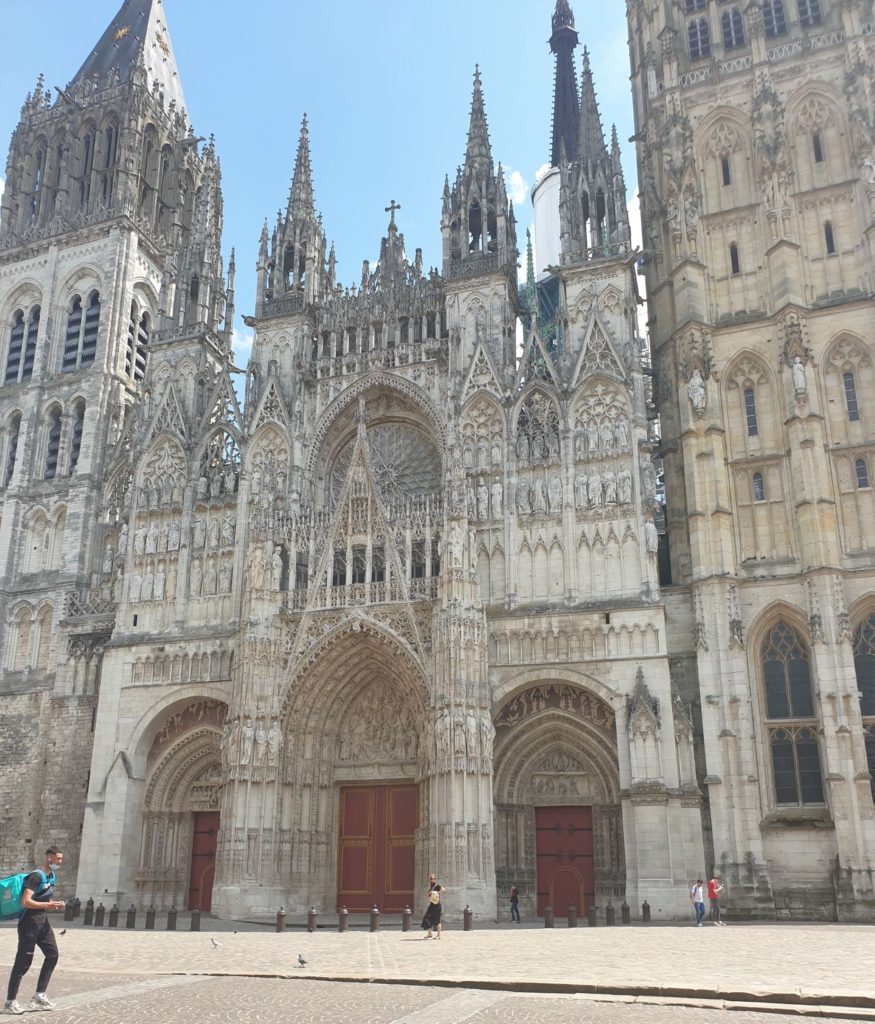
Claude Monet famously painted more than 30 views of this façade, at all different times and weather, to show the effect of different kinds of light. (He did his work from an upper floor across the way, a better vantage point than I had for this photo.)
It was the Monet series that showed how hard it is to escape Paris’s sway. The Fine Arts Museum in Rouen has only one of the cathedral paintings, while four are in Paris museums. The rest are scattered around the world. Doesn’t the city that houses the subject of the series deserve more than one?
The museum itself has many rooms of 18th-century pictures. Maybe that’s because the locals had money to buy them then?
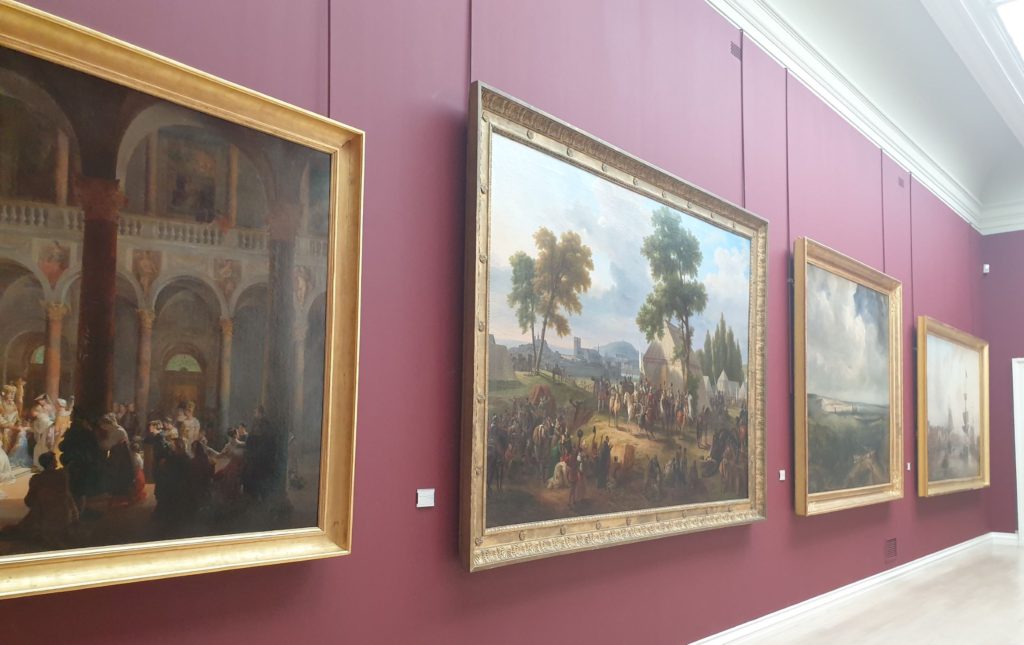
And only one room of the Impressionists, even though many of them did their best work in Normandy.
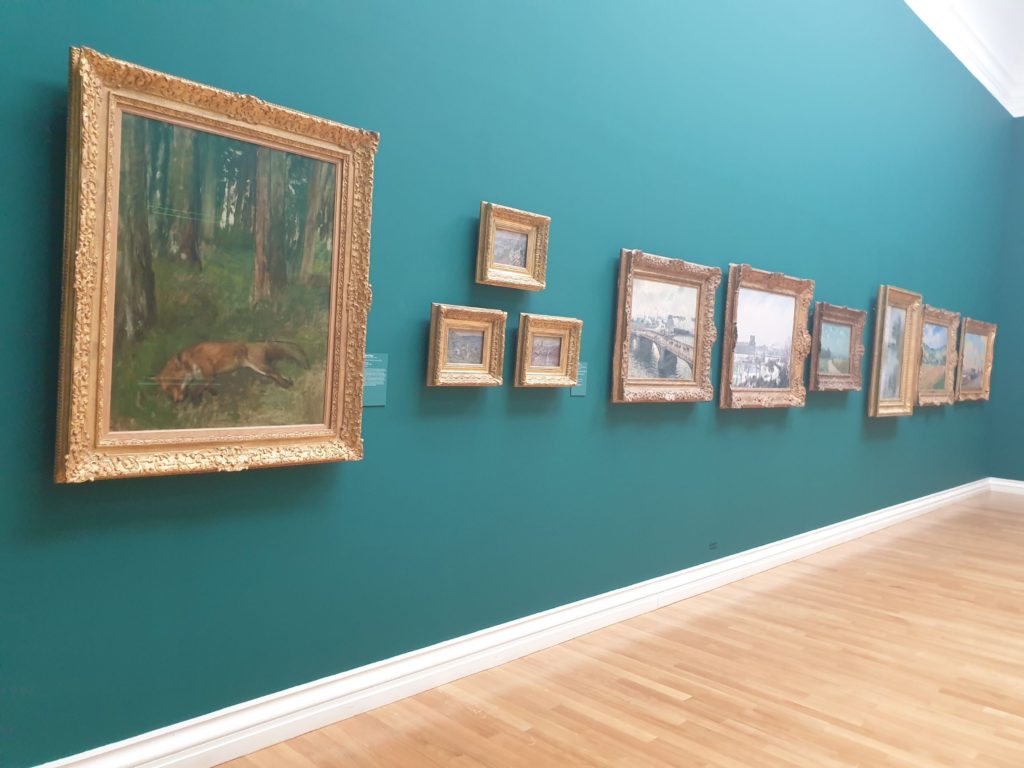
The Rouennais lived up to the cliché that the French are much nicer outside Paris. I would also add better behaved: Several of the major streets, including the main drag, rue Jeanne d’Arc, forgo traffic lights at some busy intersections, relying on drivers to stop for pedestrians in the crosswalk. This seemed to work.

That is something you would never see in Paris.

Love keeping up with your blogs. You always have a fresh and interesting take on what has or is going on. Keep writing them please….
Thanks so very much! Maybe when you’re in Paris again we can wander around some of these places together!
We love Rouen. What an excellent description of that beautiful city, Anne!
Merci Walter! I had no idea there were so many Rouen fans out there.
Makes me want to go badly. Enjoyed the piece
So go! We’ll have coffee in Paris first.
I love reading about France and very much enjoyed a visit to Rouen when Sandy and I lived in Paris.
Thanks, Winky!